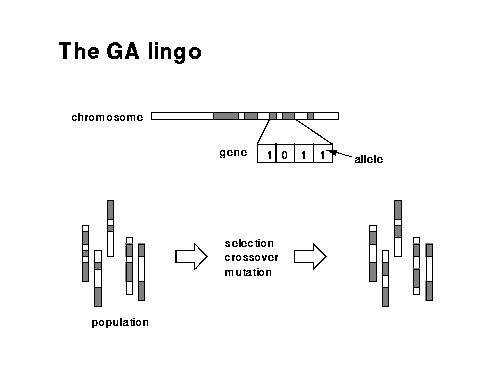



 Slide 2 of 18.
Slide 2 of 18.




Slide 2 of 18.

To use a genetic algorithm, you must encode solutions to your problem in a structure that can be stored in the computer. This object is a genome (or chromosome). The genetic algorithm creates a population of genomes then applies crossover and mutation to the individuals in the population to generate new individuals. It uses various selection criteria so that it picks the best individuals for mating (and subsequent crossover). Your objective function determines how 'good' each individual is.
The genetic algorithm is very simple, yet it performs well on many different types of problems. But there are many ways to modify the basic algorithm, and many parameters that can be 'tweaked'. Basically, if you get the objective function right, the representation right and the operators right, then variations on the genetic algorithm and its parameters will result in only minor improvements.
Since the algorithm is separated from the representation, searches of mixed continuous/discrete variables are just as easy as searches of entirely discrete or entirely continuous variables.
Return to Matthew's Portfolio